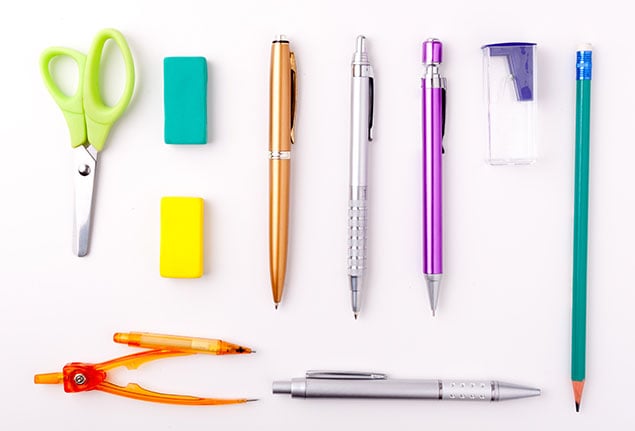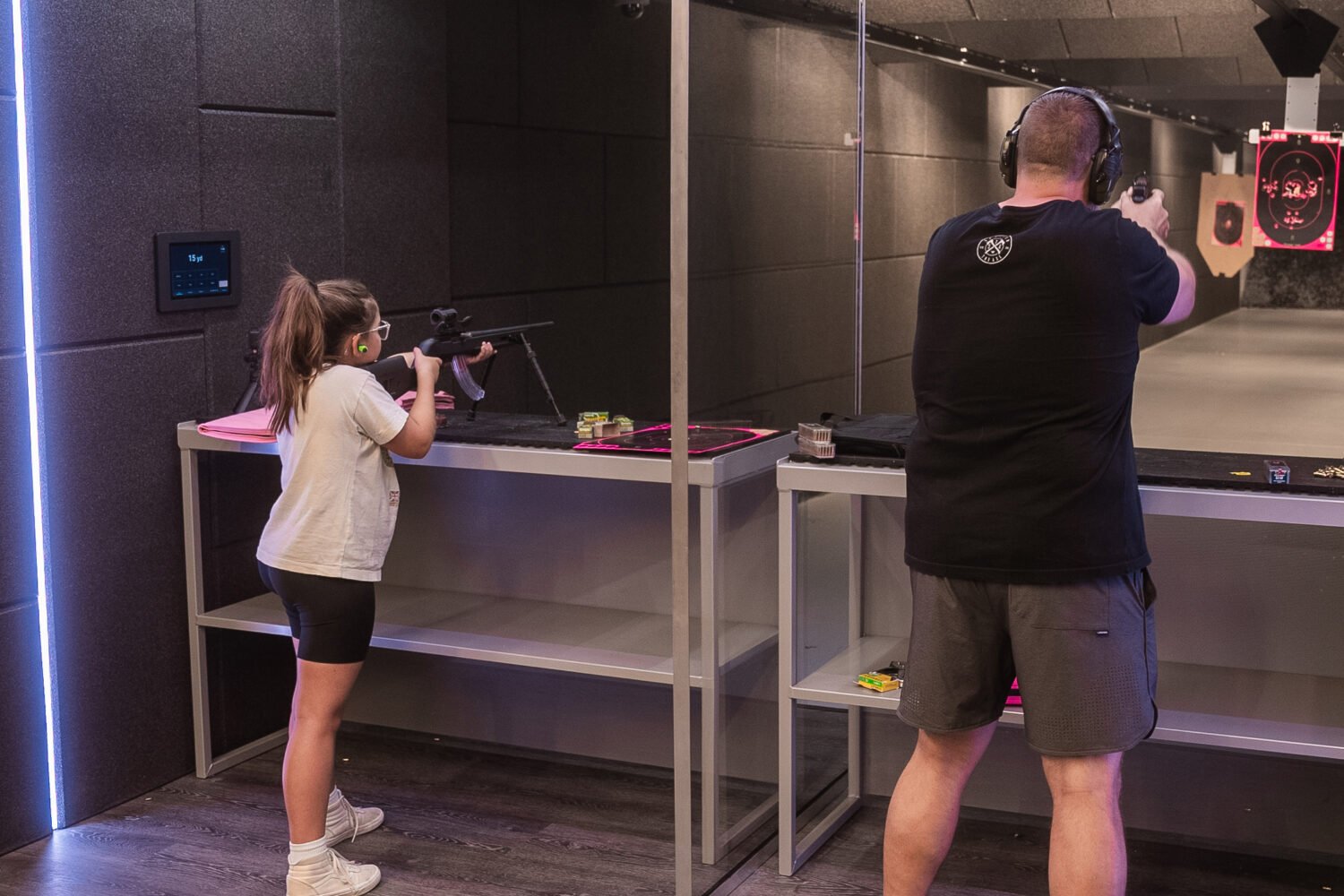1. Once you decide on an organizational system, buy
items you like to look at. “Have products that work with how you
want your office to feel, or you’re not going to use them,” organizer
Rachel Strisik says. “If you hate manila folders because they remind you
of your work office, spend the extra 50 cents on folders that match your
decor. If you’re going to add a storage box, get one in your favorite
color so you’ll gravitate toward it.”
2. Don’t try to fit everything—computer, scanner,
printer—onto a desk. “Suddenly the desktop is covered and you
have nowhere to set things you’re working on,” organizer Scott Roewer
says. Keep on the desk only items you need on hand. His clients tend to
buy smaller desks for design reasons when they actually need a larger
workspace to spread out papers.
3. Set up your office where you’ll use it.
Several of Roewer’s clients initially told him they wanted to put their
office in the basement: “I’ve said, ‘It’s kind of dark—do you think you’re
really going to go down there to work?’ And they’ve said, ‘Probably not.’
Instead we do a portable office at the dining-room table where the sun
streams through the window.”
4. Divide the room into zones. Roewer suggests
compartmentalizing your office into areas—such as workspace, supplies,
file/paperwork, mail, and reference—to establish where items
belong.
5. Use the bull’s-eye method. Smart
Productivity Solutions founder Pierrette Ashcroft advises setting up the
room so that the equipment, supplies, and files you use daily are within
arm’s reach: “A few pens, but not the supply you bought at the store. A
few sheets of paper, not reams.”
6. Start small. A home-office reorganization
can seem daunting if you don’t know where to begin. Strisik suggests
starting by setting a timer for 15 minutes and tackling a tiny
area—whether you contemplate how best to use one corner of the room or how
to sort a pile of books.
7. Utilize vertical space. “A lot of people
forget that walls go up,” Strisik says. “Adding floating shelves or
bookshelves is easy to do, and they’re inexpensive ways to increase
storage.” You can also mount vertical files on the wall rather than allow
them to take up desk space. If you have two or more two-drawer filing
cabinets, Susan Kousek, a professional organizer in Reston, recommends
placing small cubbies on top, such as the Ikea Expedit.
8. repurpose what you have. For example,
Strisik likes to put ice-cube trays in desk drawers to store items such as
paper clips, thumbtacks, and safety pins.
9. Create a dedicated space for supplies. If
you don’t have drawer space, Kousek prescribes a six-drawer supply cart;
it might fit under your desk.
10. Stop the inflow of paper. Roewer eases
clients into a life with less paper by teaching them to file e-mails,
tasks, and calendars on-line and enrolling them with DMAChoice.org,
OptOutPrescreen.com, and CatalogChoice.org to reduce junk mail. He
suggests throwing away newspaper and magazine clippings related to hobbies
and travel, instead storing the online versions by using a program such as
Evernote (which is free) or Pinterest. Avoid printing out documents to
ferry between your work and home by using Dropbox.com to share
files.
11. Digitize receipts. Organizer Pierrette
Ashcroft recommends scanning receipts with a portable scanner such as
NeatReceipts. It comes with a software program that can extract receipt
information and subtotal it for tax purposes.
12. Be ruthless. Roewer cautions clients
against filing too many documents because they think they might need them
in the future. “If it’s not going to save them money, make them money, or
keep them out of jail, they likely don’t need it,” he says. “Only 20
percent of what we file we ever look at again.” He suggests making use of
a desktop scanner: “Scan it and throw it away instead of storing it in a
drawer and never looking at it again.” He also tells clients to toss ATM
deposit slips, business cards, paycheck stubs from prior tax years,
greeting cards that don’t have meaningful notes, and user manuals that can
be viewed online.
13. But if you can’t bear to part with it . . . .
If you’re reluctant to throw away a document or clipping, Kousek
suggests keeping one “someday maybe” folder. Every couple of months, trash
the contents. If you haven’t looked at it by then, you probably won’t in
the future.
14. Invest in good-quality filing cabinets.
Kousek recommends “commercial grade” or “full suspension” cabinets,
meaning the drawers open all the way. She likes the Hon brand and some
Staples and Office Depot models. “Most people don’t like to file—if it’s
difficult, it’s not going to happen,” she says. “Make it easy to put
things away.”
15. Don’t overstuff filing cabinets. Leave room
in drawers so they’re easy to shuffle through and there’s space for more
files when necessary, says Flavia Campos of Soothing Spaces.
16. Label drawers and filing cabinets. When
Roewer edits file drawers, he says, “people are like, ‘Oh, I forgot that
was in there.’ ” He often sets up a file index directory, which can be as
simple as listing files’ contents on a piece of cardstock and taping it to
a drawer. Another option is to keep a list of a drawer’s contents in a
folder inside the front of the drawer.
17. Devise a system that caters to you. If you
need to file something related to your child’s school, Strisik says, “how
best will you recall it? Do you create a file for each child? A file that
says ‘medical’? Create a label that makes sense so you can find it.”
Roewer cautions against using prelabeled file systems: “When I ask how
people think of stuff, they might say, ‘house stuff, banking stuff, stuff
for kids.’ So we set up the system like that.” Then he groups tabs by
location, such as left tabs for house-related files, center tabs for
financial files, and right tabs for children’s files.
18. Use multipurpose furniture. Particularly
for small home offices, Strisik prefers furniture that can serve several
purposes, such as a storage ottoman that can be placed in a corner or in
front of a desk for additional seating.
19. Group like with like. By storing similar
items together—pens with pencils, labels with stationery—you’ll be more
apt to remember where to find them, Ashcroft says. Otherwise, she notes,
“people have personal things mixed in with office supplies. I always find
things like Tums mixed in with rubber bands.”
20. Make organizing fun—or more fun. When
attacking an organization project, Campos says, invite a friend to help—
and play music so the project doesn’t seem so dreary.


















